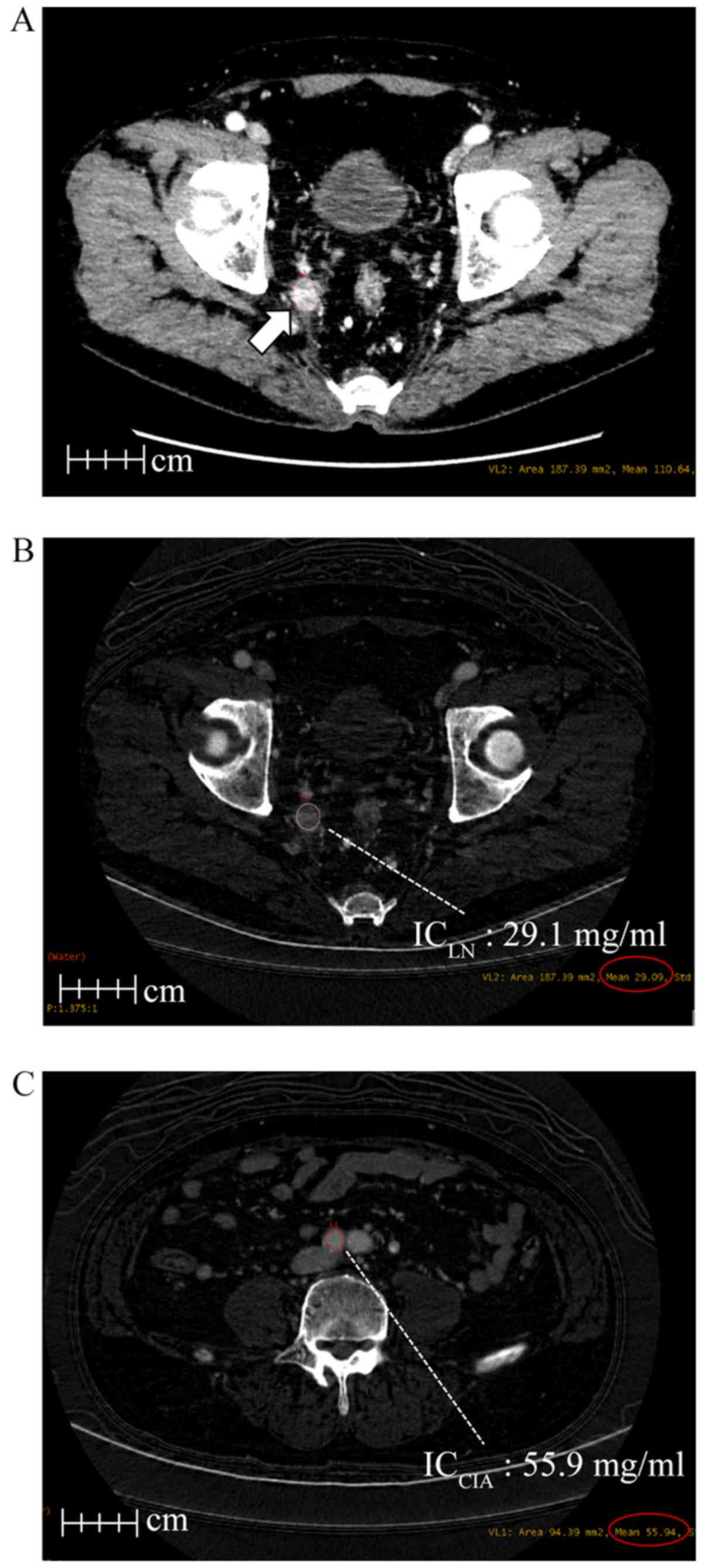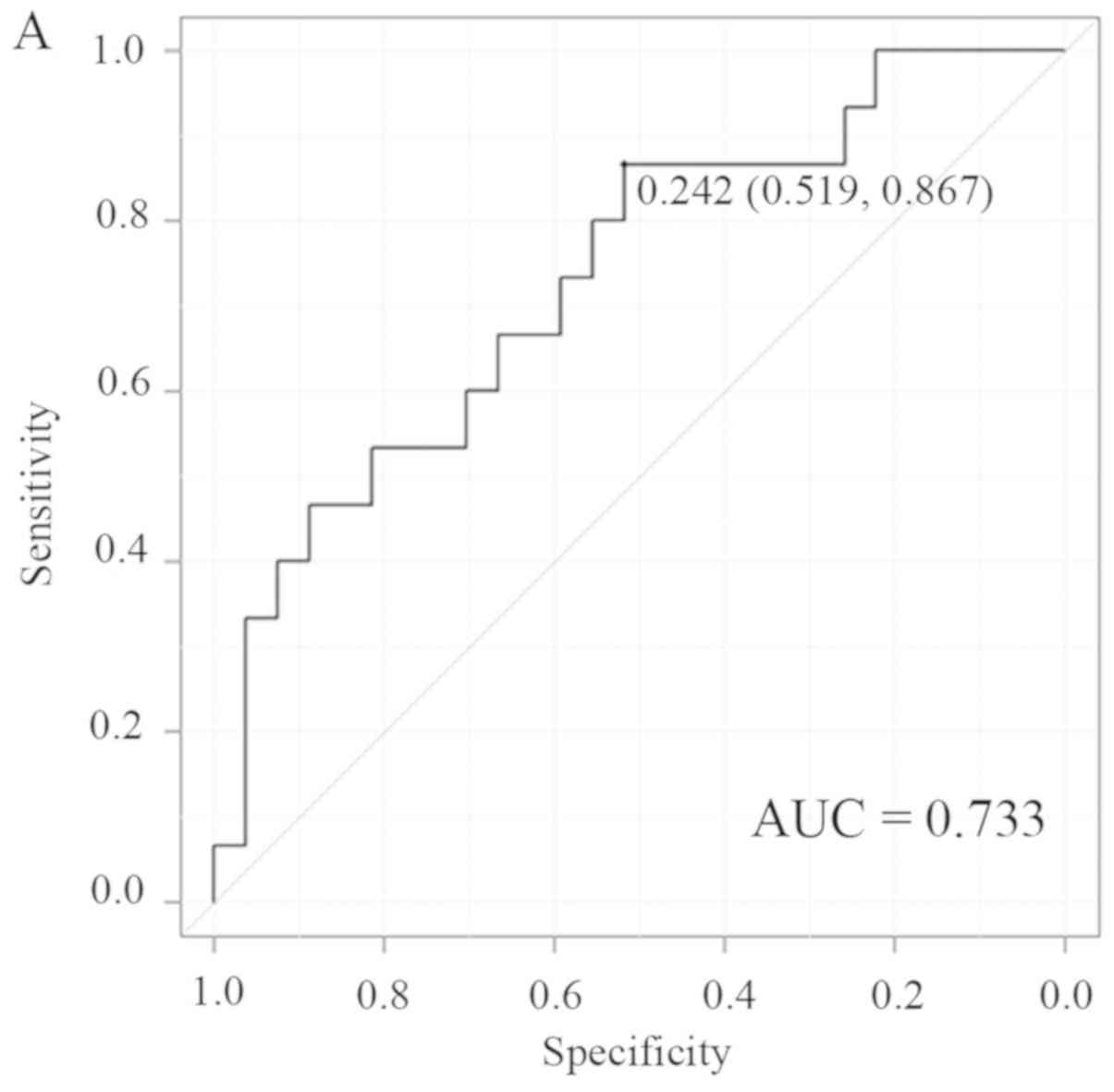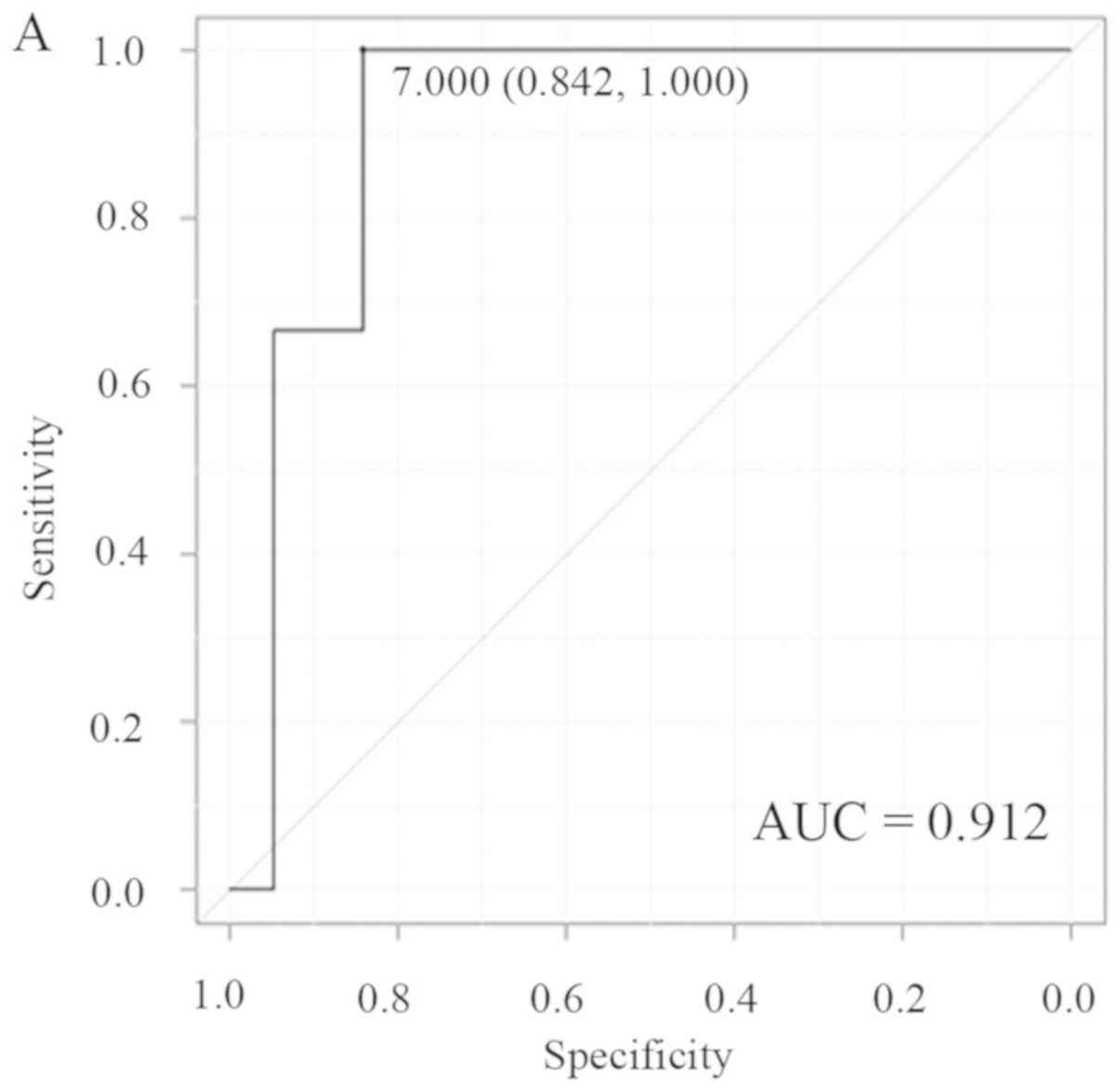|
1
|
Watanabe T, Itabashi M, Shimada Y, Tanaka
S, Ito Y, Ajioka Y, Hamaguchi T, Hyodo I, Igarashi M, Ishida H, et
al: Japanese society for cancer of the colon and rectum (JSCCR)
guidelines 2014 for treatment of colorectal cancer. Int J Clin
Oncol. 20:207–239. 2015. View Article : Google Scholar : PubMed/NCBI
|
|
2
|
MERCURY Study Group, ; Shihab OC, Taylor
F, Bees N, Blake H, Jeyadevan N, Bleehen R, Blomqvist L, Creagh M,
George C, et al: Relevance of magnetic resonance imaging detected
pelvic sidewall lymph node involvement in rectal cancer. Br J Surg.
98:1798–1804. 2011. View
Article : Google Scholar : PubMed/NCBI
|
|
3
|
Bosset JF, Collette L, Calais G, Mineur L,
Maingon P, Radosevic-Jelic L, Daban A, Bardet E, Beny A and Ollier
JC: EORTC radiotherapy group trial 22921: Chemotherapy with
preoperative radiotherapy in rectal cancer. N Engl J Medicine.
355:1114–1123. 2006. View Article : Google Scholar
|
|
4
|
Schrag D, Weiser MR, Goodman KA, Gonen M,
Hollywood E, Cercek A, Reidy-Lagunes DL, Gollub MJ, Shia J, Guillem
JG, et al: Neoadjuvant chemotherapy without routine use of
radiation therapy for patients with locally advanced rectal cancer:
A pilot trial. J Clin Oncol. 32:513–518. 2014. View Article : Google Scholar : PubMed/NCBI
|
|
5
|
Akiyoshi T, Matsueda K, Hiratsuka M, Unno
T, Nagata J, Nagasaki T, Konishi T, Fujimoto Y, Nagayama S,
Fukunaga Y and Ueno M: Indications for lateral pelvic lymph node
dissection based on magnetic resonance imaging before and after
preoperative chemoradiotherapy in patients with advanced low-rectal
cancer. Ann Surg Oncol. 3 (Suppl 22):S614–S620. 2015. View Article : Google Scholar
|
|
6
|
Ogawa S, Hida JI, Ike H, Kinugasa T, Ota
M, Shinto E, Itabashi M, Okamoto T, Yamamoto M, Sugihara K and
Watanabe T: Prediction of lateral pelvic lymph node metastasis from
lower rectal cancer using magnetic resonance imaging and risk
factors for metastasis: Multicenter study of the lymph node
committee of the japanese society for cancer of the colon and
rectum. Int J Colorectal Dis. 32:1479–1487. 2017. View Article : Google Scholar : PubMed/NCBI
|
|
7
|
Liu H, Yan F, Pan Z, Lin X, Luo X, Shi C,
Chen X, Wang B and Zhang H: Evaluation of dual energy spectral CT
in differentiating metastatic from non-metastatic lymph nodes in
rectal cancer: Initial experience. Eur J Radiol. 84:228–234. 2015.
View Article : Google Scholar : PubMed/NCBI
|
|
8
|
Fujita S, Mizusawa J, Kanemitsu Y, Ito M,
Kinugasa Y, Komori K, Ohue M, Ota M, Akazai Y, Shiozawa M, et al:
Mesorectal excision with or without lateral lymph node dissection
for clinical stage II/III lower rectal cancer (JCOG0212): A
multicenter, randomized controlled, noninferiority trial. Ann Surg.
266:201–207. 2017. View Article : Google Scholar : PubMed/NCBI
|
|
9
|
Kobayashi H, Mochizuki H, Kato T, Mori T,
Kameoka S, Shirouzu K and Sugihara K: Outcomes of surgery alone for
lower rectal cancer with and without pelvic sidewall dissection.
Dis Colon Rectum. 52:567–576. 2009. View Article : Google Scholar : PubMed/NCBI
|
|
10
|
Akasu T, Sugihara K and Moriya Y: Male
urinary and sexual functions after mesorectal excision alone or in
combination with extended lateral pelvic lymph node dissection for
rectal cancer. Ann Surg Oncol. 16:2779–2786. 2009. View Article : Google Scholar : PubMed/NCBI
|
|
11
|
Japanese Society for Cancer of the Colon
Rectum, . Japanese Classification of Colorectal Carcinoma (8th).
Kanehara Shuppan. Tokyo, Japan: 2013.
|
|
12
|
Aoki M, Takai Y, Narita Y, Hirose K, Sato
M, Akimoto H, Kawaguchi H, Hatayama Y, Miura H and Ono S:
Correlation between tumor size and blood volume in lung tumors: A
prospective study on dual energy gemstone spectral CT imaging. J
Radiat Res. 55:917–923. 2014. View Article : Google Scholar : PubMed/NCBI
|
|
13
|
Kanda Y: Investigation of the freely
available easy-to-use software ‘EZR’ for medical statistics. Bone
Marrow Transplantat. 48:452–458. 2013. View Article : Google Scholar
|
|
14
|
Matsumoto K, Jinzaki M, Tanami Y, Ueno A,
Yamada M and Kuribayashi S: Virtual monochromatic spectral imaging
with fast kilovoltage switching: Improved image quality as compared
with that obtained with conventional 120-kVp CT. Radiology.
259:257–262. 2011. View Article : Google Scholar : PubMed/NCBI
|
|
15
|
Zhang D, Li X and Litl B: Objective
characterization of GE discovery CT750 HD scanner: Gemstone
spectral imaging mode. Med Phys. 38:1178–1188. 2011. View Article : Google Scholar : PubMed/NCBI
|
|
16
|
Morohashi H, Sakamoto Y, Ichinohe D, Jin
H, Miura T, Tsushima F, Ono S and Hakamada K: Evaluation of the
therapeutic effect of using dual-energy CT for rectal cancer after
neoadjuvant chemotherapy. Gan To Kagaku Ryoho. 43:1482–1484.
2016.(In Japanese). PubMed/NCBI
|
|
17
|
Kato T, Uehara K, Ishigaki S, Nihashi T,
Arimoto A, Nakamura H, Kamiya T, Oshiro T, Ebata T and Nagino M:
Clinical significance of dual-energy CT-derived iodine
quantification in the diagnosis of metastatic LN in colorectal
cancer. Eur J Surg Oncol. 41:1464–1470. 2015. View Article : Google Scholar : PubMed/NCBI
|
|
18
|
Naresh KN, Nerurkar AY and Borges AM:
Angiogenesis is redundant for tumour growth in lymph node
metastases. Histopathology. 38:466–470. 2001. View Article : Google Scholar : PubMed/NCBI
|
|
19
|
Kamiya T, Uehara K, Nakayama G, Ishigure
K, Kobayashi S, Hiramatsu K, Nakayama H, Yamashita K, Sakamoto E,
Tojima Y, et al: Early results of multicenter phase II trial of
perioperative oxaliplatin and capecitabine without radiotherapy for
high-risk rectal cancer: CORONA I study. Eur J Surg Oncol.
42:829–835. 2016. View Article : Google Scholar : PubMed/NCBI
|
|
20
|
Hasegawa S, Goto S, Matsumoto T, Hida K,
Kawada K, Matsusue R, Yamaguchi T, Nishitai R, Manaka D, Kato S, et
al: A multicenter phase 2 study on the feasibility and efficacy of
neoadjuvant chemotherapy without radiotherapy for locally advanced
rectal cancer. Ann Surg Oncol. 24:3587–3595. 2017. View Article : Google Scholar : PubMed/NCBI
|
|
21
|
Nakamura T, Yamashita K, Sato T, Ema A,
Naito M and Watanabe M: Neoadjuvant chemoradiotherapy using S-1 and
irinotecan in rectal cancer: Impact on long-term clinical outcomes
and prognostic factors. Int J Radiat Oncol Biol Phys. 89:547–555.
2014. View Article : Google Scholar : PubMed/NCBI
|












